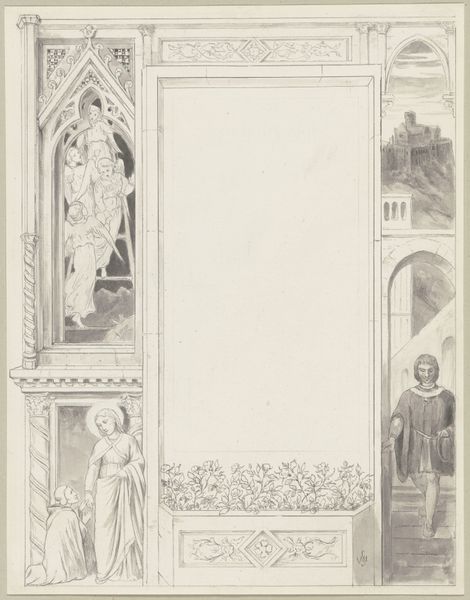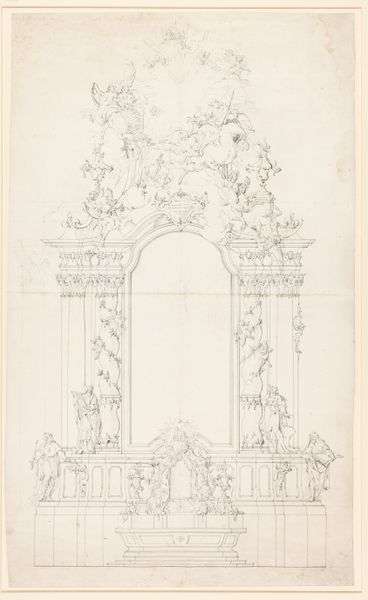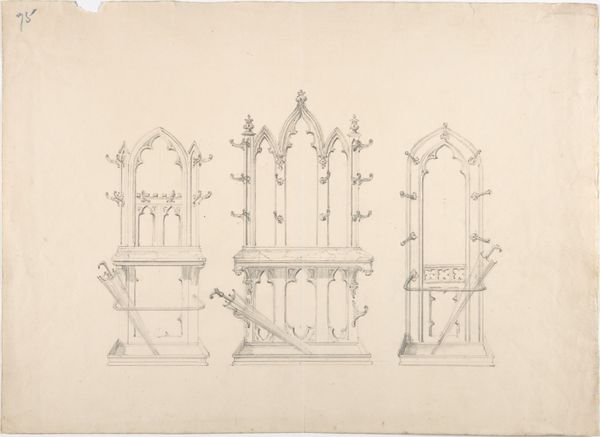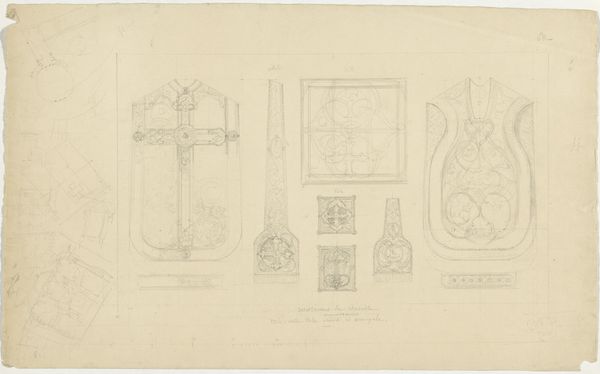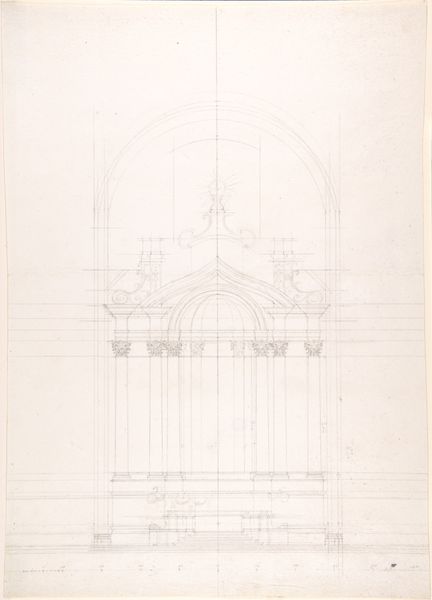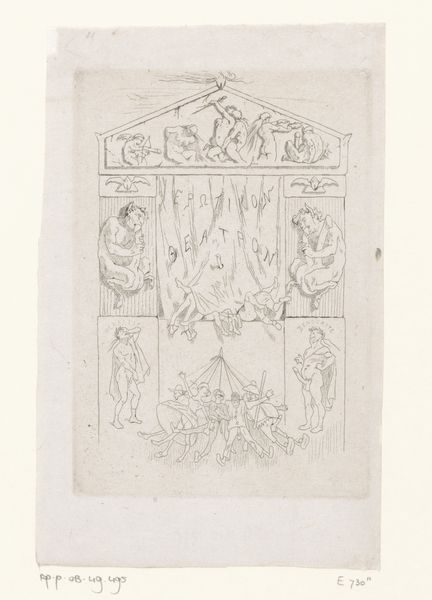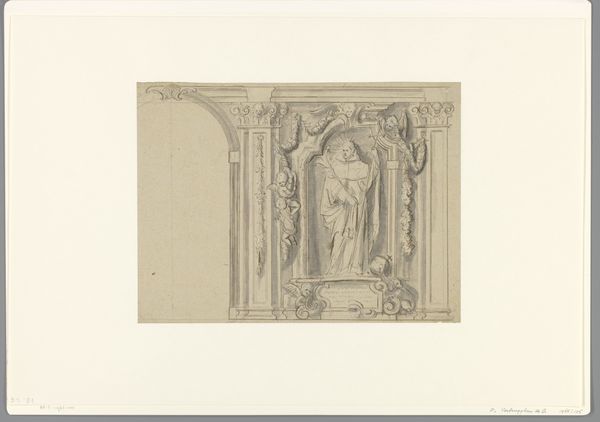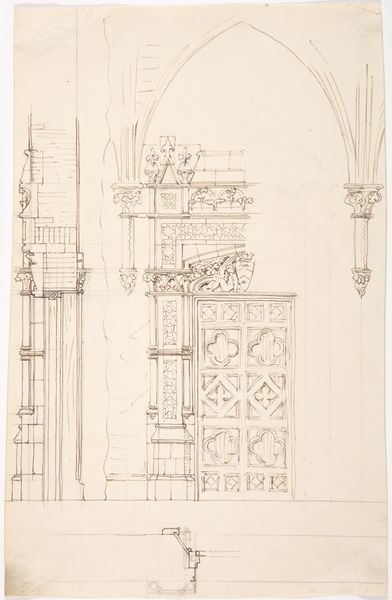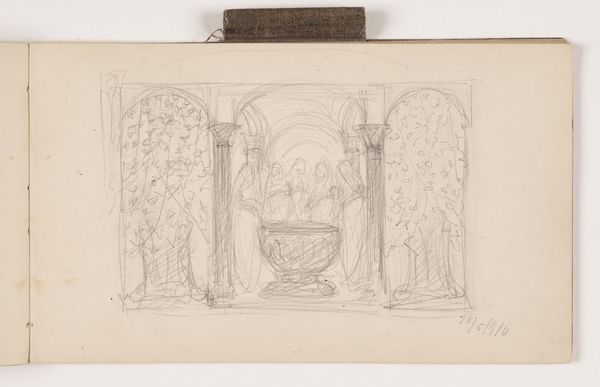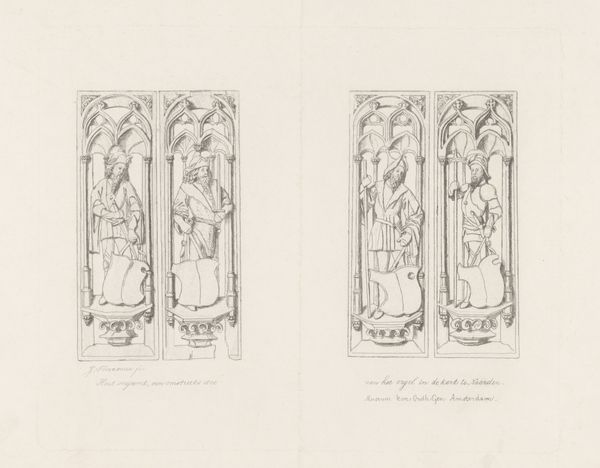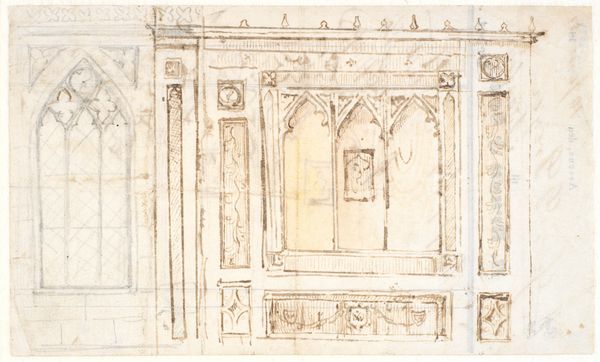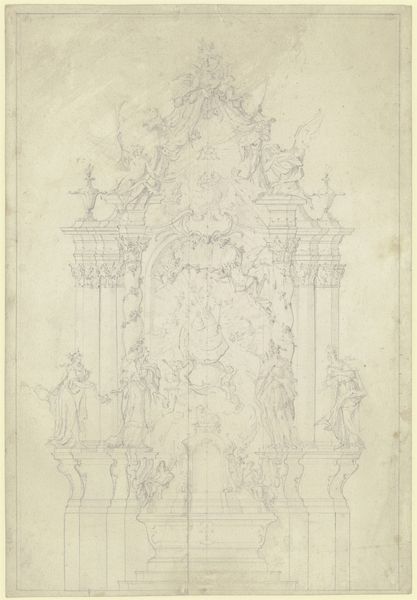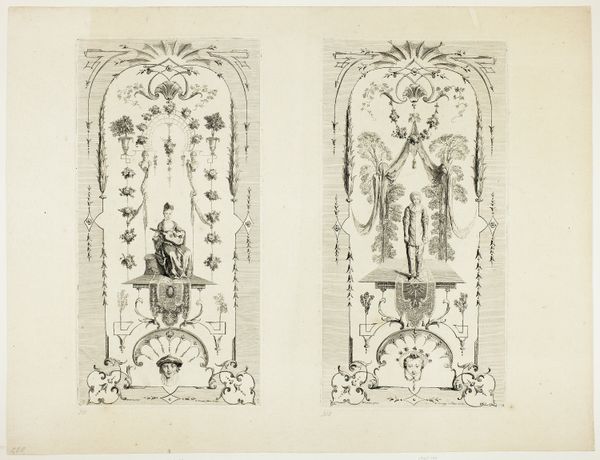
Vijf details van de Sint-Janskathedraal te 's-Hertogenbosch 1847 - 1851
0:00
0:00
drawing, print, pencil
#
drawing
#
medieval
# print
#
landscape
#
geometric
#
pencil
#
academic-art
Dimensions: height 511 mm, width 691 mm
Copyright: Rijks Museum: Open Domain
Curator: Looking at this pencil drawing, I’m struck by a certain… almost reverent stillness. It's so meticulously rendered; it feels like holding a hushed conversation with the stones themselves. What do you think? Editor: I see a plate rather crammed with architectural elements. Here we have Johann Wilhelm Kaiser's "Vijf details van de Sint-Janskathedraal te 's-Hertogenbosch," a fascinating early- to mid-19th century print offering us details from the Medieval cathedral. Immediately, the rigid formality in Kaiser's arrangements hints at the core principles that define academic art. Curator: Rigid is one word! But those rigid lines also somehow give structure to dreams. Looking at these sketches makes me think about devotion, craftsmanship and history. Do you sense a little of the romantic quest to freeze time, hold it on paper before it vanishes? Editor: The academic approach prizes precision and objectivity, thus creating drawings based on meticulous observation. Note the orthographic projections of Gothic arches; this reveals how artists in that era studied these structures as rational objects composed of modular elements, much like a mechanical drawing. Curator: Modular like prayers in stone. I feel these isolated components give the whole place an ethereal existence; rather than depicting its overwhelming scale in a traditional landscape, Kaiser has cut it up to fit into this singular format as he surveys its interior reality. It's like gazing into the very soul of a building, piece by delicate piece, stone, engraving and architectural drawing. Editor: By focusing intently on details—a statue of Mary, ornamented corbels, decorated arches—the drawing compels an appreciation for Gothic architecture beyond monumental spectacle. And furthermore, each figure can be anatomized through rational and reasoned analysis. Kaiser uses detail to offer viewers accessible yet rigorous artistic consumption. Curator: Which, paradoxically, transforms something solid into something ghost-like. Well, that’s what good art does, isn't it? It invites us to touch the intangible. I feel more inspired to step into its tangible presence now. Editor: Indeed. These lithographs grant access beyond a single perspectival viewpoint, piecing reality back together. It now prompts one to appreciate the cathedral from its detailed lexicon.
Comments
No comments
Be the first to comment and join the conversation on the ultimate creative platform.
